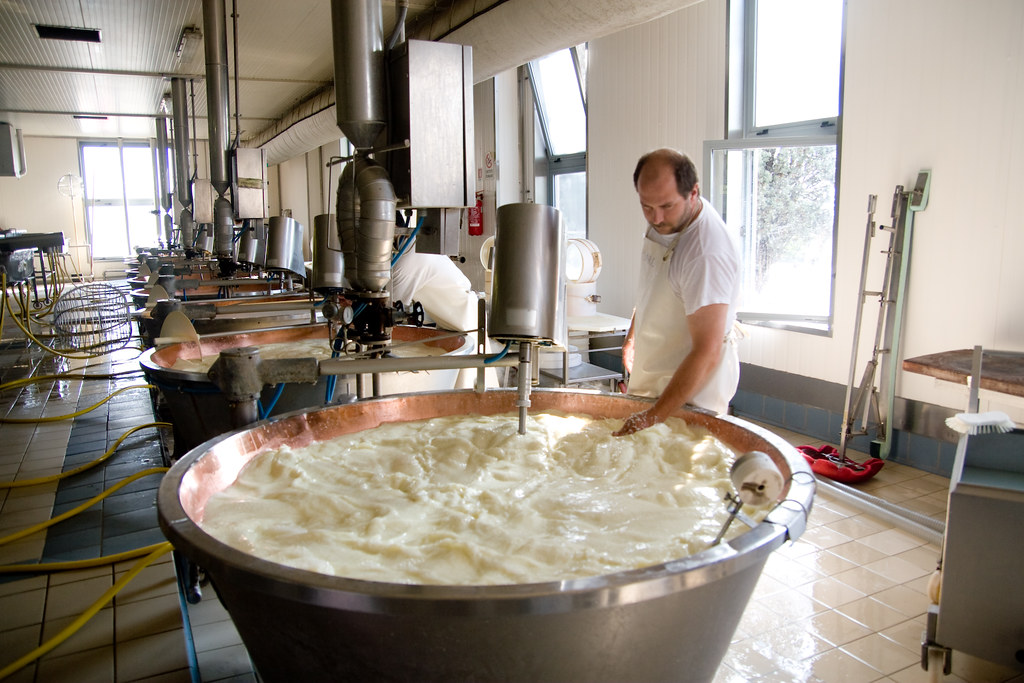The Best of Melbourne Made Cheese: Floridia Cheese Melbourne's One-of-a-kind Offerings
The Best of Melbourne Made Cheese: Floridia Cheese Melbourne's One-of-a-kind Offerings
Blog Article
Unlocking the Keys of Artisanal Cheese Making: A Step-by-Step DIY Overview
In the realm of culinary workmanship, artisanal cheese making stands as a testimony to the delicate balance in between practice and technology. Each step in the process, from picking the right milk to improving aging strategies, holds within it a wealth of understanding gave through generations. As we begin on this journey to demystify the art of creating exquisite cheeses, we are confronted with a tapestry of secrets and skills waiting to be unwinded. Join us as we discover the intricacies of this ancient craft, where perseverance, art, and scientific research converge to create flavors that entice the detects.
Picking the Right Milk
When embarking on the trip of artisanal cheese making, the choice of milk plays a crucial function in figuring out the top quality and attributes of the final product. The type of milk selected affects the taste, texture, and on the whole profile of the cheese.
When selecting milk for cheese production, it is essential to take into consideration the fat material. Greater fat material in milk can result in a creamier and richer cheese, while reduced fat content might lead to a drier and stronger structure. Additionally, the resource of the milk, whether from cows, goats, lamb, or buffalo, adds unique flavors and features to celebrity (Floridia Cheese). Each type of milk brings its very own subtleties, permitting for a vast variety of cheese varieties to be crafted based upon the chosen milk. Inevitably, the selection of milk is an essential decision that establishes the structure for an effective artisanal cheese-making undertaking.
Culturing and Coagulating
To initiate the cheese-making procedure, the essential steps of culturing and coagulating need to be very carefully carried out to change milk into curds and whey. Culturing entails introducing useful microorganisms to the milk, which after that begins the fermentation process. These microorganisms transform lactose (milk sugar) into lactic acid, creating the acidic atmosphere necessary for coagulation. The sort of society used can significantly impact the flavor, structure, and ripening of the last cheese item.

The timing and temperature level control throughout culturing and coagulation are vital elements that affect the final result of celebrity. Appropriate implementation of these steps is vital to ensure the preferred structure, taste, and consistency of the artisanal cheese being produced.
Draining Pipes and Pressing Curds
After the milk healthy proteins have coagulated and the curds have actually been cut to launch whey, the next important step in artisanal cheese making includes draining and pushing the curds to achieve the desired appearance and uniformity of the last cheese product. Draining pipes is the procedure of dividing the curds from the whey. This can be done by transferring the curds right into a cheesecloth-lined bowl-shaped sieve or mold and mildew and enabling the whey to drain off naturally. The moment for draining pipes can differ depending on the sort of cheese being made and the desired dampness content.
When the curds have actually adequately drained pipes, the next step is pushing. Pushing assists eliminate any type of remaining whey and compacts the curds to develop a solid cheese wheel. Pushing can be done using specialized cheese presses that apply consistent and gentle stress over a time period. The period and stress applied during pushing will certainly affect the final texture of the cheese, from velvety and soft to difficult and company. Correct draining and pushing are critical actions that significantly influence the quality and qualities of the artisanal cheese being created.
Aging and Flavoring Techniques
Carrying out thorough aging and flavoring techniques is critical in improving the depth and complexity of artisanal cheeses, raising their preference profiles to splendid degrees of improvement and sophistication. Aging plays a crucial duty in creating the special tastes and textures that identify artisanal cheeses. Throughout the aging process, cheeses are saved in thoroughly managed environments where elements such as temperature, moisture, and airflow are adjusted to motivate the development of helpful molds and microorganisms. This controlled environment enables celebrity to develop slowly, establishing complex fragrances and rich flavors.
Flavoring methods additionally add considerably to the last preference of artisanal cheeses. Cheesemakers may select to navigate here present added flavors by integrating active ingredients such as natural herbs, spices, and even fruits right into celebrity during the manufacturing process. Furthermore, some cheeses are cleaned this content or massaged with numerous liquids, such as brine or alcohol, to improve their appearances and tastes.
Wrapping and Storing Cheeses

Conclusion
In final thought, understanding the art of artisanal cheese making entails very carefully selecting the ideal milk, adhering to precise culturing and coagulating procedures, draining pipes and pushing curds effectively, and utilizing different aging and flavor strategies. Remember to wrap and keep your cheeses appropriately to make certain optimal flavor and structure advancement.
Each type of milk brings its own subtleties, enabling for a vast array of cheese varieties to be crafted based on the chosen milk.After the milk proteins have coagulated and the curds have been reduced to launch official website whey, the next essential action in artisanal cheese making entails draining pipes and pressing the curds to achieve the preferred appearance and uniformity of the final cheese product. The majority of cheeses should be wrapped in wax paper or cheese paper to allow them to breathe while securing them from drying out. For cheeses that require to proceed aging, such as bloomy rinds or washed peels, guarantee they are kept in a trendy environment like a cheese cavern or a fridge established to the appropriate temperature. By paying attention to the covering and storage of artisanal cheeses, cheese manufacturers and lovers can preserve the integrity of these specials and totally appreciate their complicated flavors.
Report this page